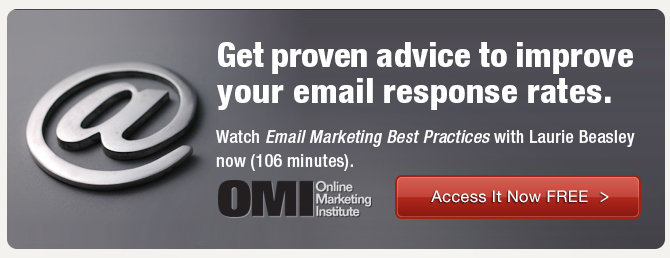 We’ve known for a while now that mobile is a critical factor in all things marketing. This is particularly true for email marketing today. Between October 2010 and October 2012, mobile email opens increased by a whopping 300%
We’ve known for a while now that mobile is a critical factor in all things marketing. This is particularly true for email marketing today. Between October 2010 and October 2012, mobile email opens increased by a whopping 300%
According to Litmus Labs, 42% of the email client market share is on a mobile platform such as iPhone, iPad or Android.
ExactTarget reveals that 56% of consumers with a smartphone have purchased something as a result of an email message. This is a worldwide phenomenon, with USA email open rates trailing those of Europe, but growing quickly.
You may be doing a bang-up job on designing and writing emails to support your direct marketing effort—but if you aren’t designing email for the mobile device, you may be missing some real opportunities.
1. Pass the gauntlet of mobile email viewing.
There are five stages of mobile email viewing. You must craft your email to move the customer successfully through each stage:
From line: who sent the email? If the reader isn’t interested in the from line, s/he will skip or delete. Some people won’t open email if they don’t recognize the sender, so it’s important that your from line is easy to understand. According to the Email Sender and Provider Coalition (ESPC), 73% of subscribers click “Report Spam” based on the content of the from field.
Subject line. The ESPC notes that 69% of subscribers decide whether to send your message to the spam folder based on the content of the subject line. For mobile viewers, you need to keep your subject line short and sweet–35 characters or less.
Preview pane (also called the preheader). Your call to action should be in the preview pane, because this is the next decision point for the reader. A compelling call to action here may tip the balance in your favor. You have about 85 characters to work with here.
Viewport. If you have crafted each of the preceding steps carefully, the subscriber will open the email. But you’re not home free yet—if the best part of your message falls below the “fold,” forcing the user to scroll down to see it, you may yet lose your customer. Make sure the most important content is right up front and remember how small that screen is. Consider using bullets, borders or background colors to encourage the subscriber to scroll down.
Scrolling view. Now the subscriber is scrolling down to read the complete message. Stick with clear and concise verbiage and make answering the call to action easy and obvious—a big button with clear wording such as “Get Your Free Upgrade” works well.
2. Remember that users tap and swipe, not click.
Always remember that mobile users are working with touch screens. They tap on links and swipe to see more. They don’t click or use a mouse or a keyboard. Your interactive elements should be large enough so that people can easily tap them on a tiny screen, even if they have “fat fingers”:
- Keep buttons at least 44 pixels square for easy tapping
- Keep links and buttons to the center or left for ease of use
- Separate links so the user doesn’t inadvertently tap more than one simultaneously
- Avoid hovers and other interactive user interface elements
- Never say “Click Here” because mobile users are tapping
3. Optimize your layout and graphics for mobile.
The iPhone, which represents 24% of email opens,
scales messages down. Stick to a single-column layout, as double-column becomes hard to read on a small screen. Use large text sizes for the same reason. Use contrast to increase legibility—but don’t leap to an extreme, such as white type on a black background, which is difficult to read. Keep buttons extra large to be tappable even after shrinking, and use texture to make buttons more appealing.
Use large photos, both for their visual appeal, and also because they translate well to both mobile and desktop environments.
4. Leverage responsive design.
Responsive design is a set of techniques used to make a layout readable and usable on any screen and any platform on which it is displayed. Use of fluid grids, fluid images and media queries allow “smart” messages to sense what kind of device is being used to display them, and adjust accordingly. A message that is displayed on a desktop as 600 pixels wide with multiple columns will recompose itself dynamically to become 320 pixels wide and single-column. In today’s multi-platform, multi-device environment, responsive design is the only way to go. RELATED TUTORIAL: The Mobile Web & Responsive Design
Learn how how to drive more email opens, clicks, and conversions.
Watch Laurie Beasley's class on Email Marketing Best Practices now, and discover advanced tips to make your email marketing more effective. From creative and offer to list building and timing, this class covers what you need to know to take your email marketing to the next level. Get instant access now—FREE.
